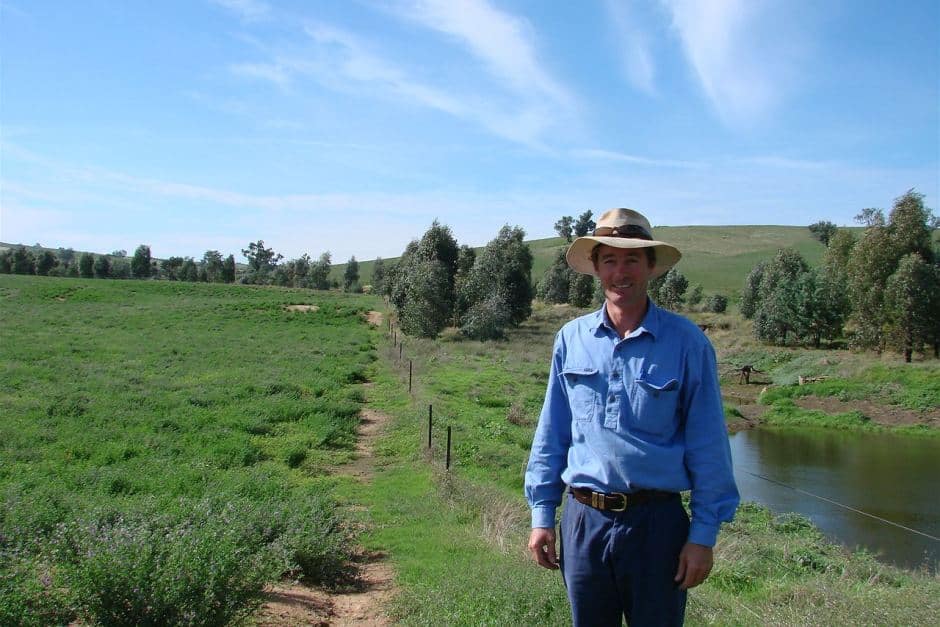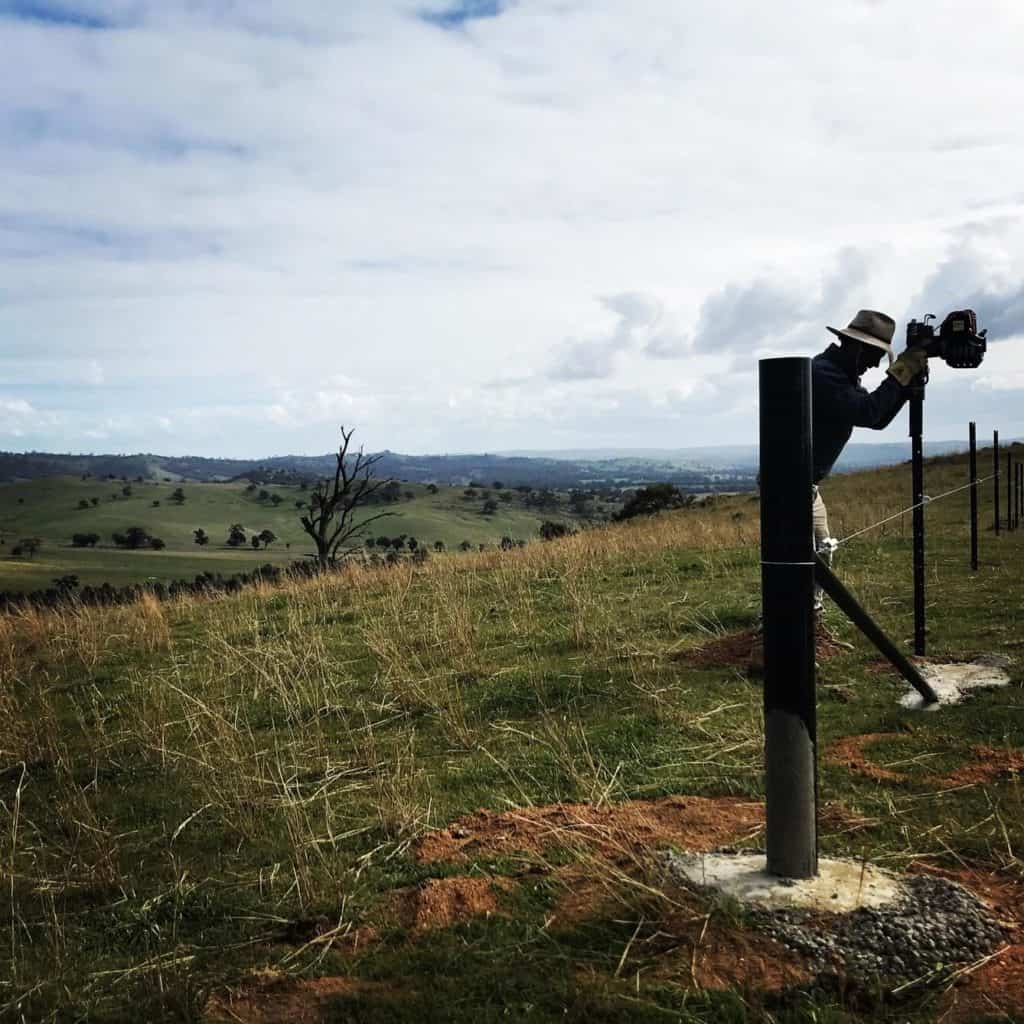For Nick Austin, working with nature is as much a passion as it as a way of life. Nick is a multi-generational farmer and tertiary educated engineer who runs a 1400Ha beef cattle enterprise under holistic management principles. We spoke with Nick about their move into regenerative agriculture and reticulated water mapping at Mundarlo.
“Since our move into regenerative agriculture we run all our 500hd of cattle and 2000 sheep in one mob (or flerd). The pressure that the mob size places on our water infrastructure has increased, so we redesigned and installed a new reticulated water scheme. During this process we used Phoenix Mapping to assist in finding the most suitable pipeline routes. At the same time, we are subdividing paddocks to help with our grazing management and allow longer recoveries between grazes. Phoenix Mapping once again has proven vital in planning these paddock subdivisions.”

While we’ve come a long way from bore drains when it comes to effectively watering livestock, water reticulation planning still very much involves working with the natural environment.
A good water reticulation design will aim to do the following:
- Increase farm productivity by selecting the best location for tanks and troughs.
- Save long-term pumping costs by using land elevation and the pressure provided by your pipeline connection to reticulate water around your property.
- Reduce the cost to install tanks, troughs and pipe on your property by better understanding distances and requirements.
RETICULATED WATER MAPPING AT MUNDARLO:
Where does your water come from and what challenges/benefits does this pose?
All our water comes from the Murrumbidgee River and is reticulated around the farm. We have no challenges except for a little maintenance. The benefit is that we can graze 49 of our 50 paddocks through any dry times. Only one paddock is not on the reticulated system and has a dam which does dry out.
THE 2001 SYSTEM:
How old was the original watering system that you replaced? When and why did you replace it?
My father and his grandfather put in the first reticulated system in 1967. We replaced nearly all of it in 2001 when we wanted to run fewer mobs of cattle, the old system didn’t have the flow rate to keep up.
You replaced the old system with 2-inch poly along fence lines to allow for cropping. In hindsight, why was this a mistake and what was your new solution to avoid pipes interfering with cropping paddocks?
This was definitely a mistake. Reticulated systems need the most direct route and the smoothest route without lumps and bumps. These lumps cause airlocks and reduce water flow.
I am not sure what we were thinking with trying to avoid cropping areas. The pipe is 300mm down which is well below sowing depth.

WE’LL GET IT RIGHT THIS TIME:
You worked with an old school system designer who used hand drawn maps etc. How did using Phoenix compare with his system and why did you do both?
When we started upgrading our system for the second time in 2009, we used the services of a professional reticulated system designer. To find the best pipeline profiles, he would use a contour map and hand draw the profiles. Mapping programs that could do profiles weren’t available at that time. Once Phoenix came out with its Mapping module, I produced a profile for an upgraded mainline in 2016. He didn’t bother hand drawing them for me after that.
How did using Phoenix save you time and money with this project?
The main saving was in design costs. I could map out the proposed new pipeline and do a profile. I would send this to the designer who would tell me what pipe diameter to use to get the desired flow rates.
This saved me time getting pipe distances. I would use Phoenix to get distances, so I didn’t have to go out into the paddock and measure by hand.
What is involved with your new system?
The new system uses all metric pipe, no more rural class. The main pump is a Mono Helical Rotor which pumps from the river to our main storage tank (75kL). We have a reserve tank (230kL) which sits beside this in case the pump fails. There is a 90mm mainline which links our main storage tank to another 200kl storage tank. All branch lines are either 63mm or 50mm pipe to ensure a minimum of 2l/s at troughs. All troughs are 5m long cement on a 5x6m concrete pad.
How did using Phoenix Mapping to sub-divide paddocks help? Did you divide by land/pasture types, watering points or other parameters?
I use Phoenix Mapping to assist in designing paddock sub-divisions; mainly the design around existing water points. Phoenix Mapping allows me to:
- Run virtual fence lines to get lengths for material costs
- Position fences, so I get the size of the sub-divisions I want.
- It also helps working routes through trees, rocks, gullies etc.